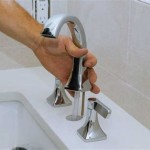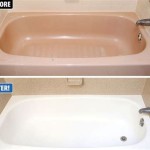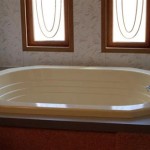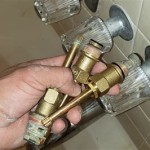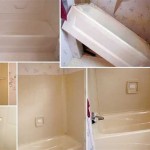Bathtub Stopper Not Working: A Guide to Diagnosis and Repair
A malfunctioning bathtub stopper can be a frustrating and inconvenient problem. Whether you're dealing with water leaking out of the drain or an inability to seal the water in the tub, understanding the underlying cause is essential for an effective repair. This article will guide you through the common issues associated with faulty bathtub stoppers, helping you identify the source of the problem and providing step-by-step repair solutions.
Diagnosis and Repair Options
1. Clogged Drain: A buildup of hair, soap scum, or other debris can block the drain, preventing the stopper from forming a proper seal. To unclog the drain, use a drain cleaner or a mixture of baking soda and vinegar. Alternatively, you can remove the stopper and clear the obstruction with a wire or hook.
2. Damaged Stopper Gasket: The gasket, which creates the watertight seal between the stopper and drain, can become worn or damaged over time. Replace the gasket with a new one that matches the size and shape of your stopper.
3. Loose or Worn Linkage: The linkage connects the stopper to the drain lever. If it becomes loose or worn, it can cause the stopper to not fully engage in the drain. Tighten any loose screws or replace the linkage if it's damaged.
4. Sticking Stopper: Mineral buildup or corrosion can cause the stopper to stick. Remove the stopper and clean it with a vinegar solution. If it's heavily corroded, it may need to be replaced.
5. Leaking Tailpipe: The tailpipe connects the drain to the plumbing system. If it's loose or cracked, it can allow water to leak out. Tighten the tailpipe or replace it if necessary.
Tips for Preventing Future Issues
To extend the life of your bathtub stopper and prevent future malfunctions, consider the following tips:
- Clean the stopper and drain regularly to prevent clogs.
- Use a bath mat to catch hair and other debris.
- Avoid using harsh chemicals or abrasive cleaners on the stopper or drain.
- Inspect the linkage and gasket periodically for any signs of wear or damage.
- If a repair is necessary, seek professional assistance from a qualified plumber.
By following these tips and addressing any bathtub stopper issues promptly, you can ensure a well-functioning drain system for a comfortable and hassle-free bathing experience.

Bathroom Repair How To A Pop Up Tub Drain Stopper

How To Fix A Bathtub Or Sink Pop Up Stopper

Replace And Adjust Ing Bath Drain

8 Ways To Block A Bathtub Drain Without Plug

How To Remove A Bathtub Drain The Home Depot

Replace And Adjust Ing Bath Drain

How To Fix A Leaking Trip Lever Bathtub Stopper Eagle Mountain Woodford Watco Blog

How To Remove A Bathtub Drain Stopper

Water Is Not Going Down Bathtub Drain Plug Removal For Cleaning Lift And Turn Stopper Won T Go

How To Remove A Bathtub Drain Stopper
Related Posts

